'A bird-rich state': 10 distinctive birds to watch in Florida
Some sound like a dinosaur or a woman in distress. Others are known for their flashy looks, wearing bright red patches on their shoulders or feathered coats of many colors.
More than 500 species of birds live in Florida for some or all of their lives, according to Audubon Florida. And while winter is prime birdwatching season in the state, there are plenty to see in the spring and summer as well.
Florida residents pretty much any time of the year can spot some colorful and quirky birds in their backyards or close by.
"We're so fortunate in Florida because we live in a bird-rich state," said Ann Paul, president of the Florida Ornithological Society.
Here's a look at 10 of the most distinctive birds that Sunshine State residents can see.
Roseate Spoonbill
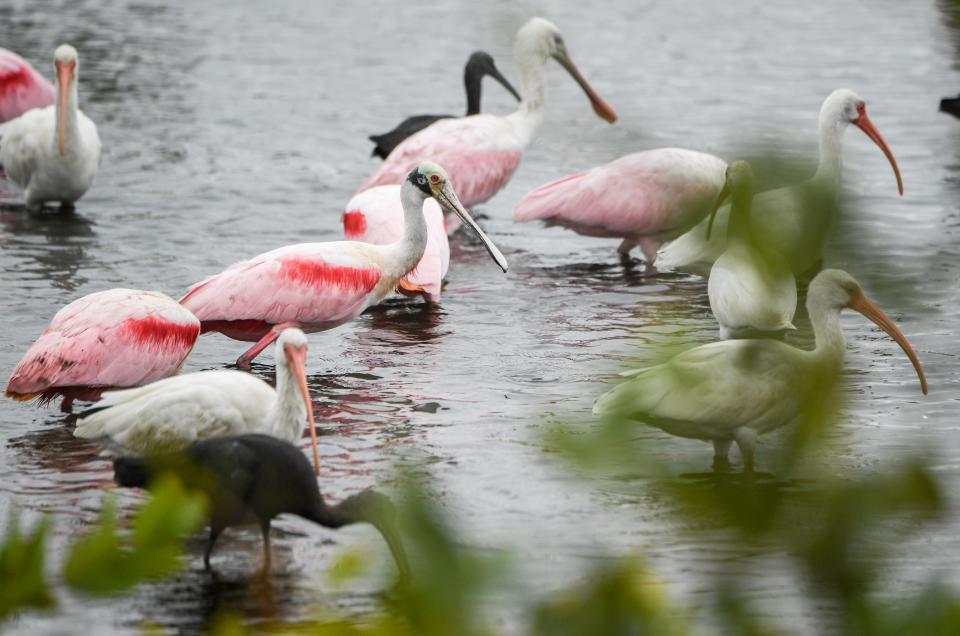
No, they're not flamingoes, but these pink waterbirds are sometimes mistaken as such. Their feathers resemble a pink watercolored painting, and they get that way from the food they grab with their spoon-shaped bill.
"Crustaceans and other aquatic invertebrates contain pigments called carotenoids that help turn their feathers pink," according to the Cornell Lab of Ornithology.
They're a regular sight in St. Augustine and are known to nest at the St. Augustine Alligator Farm Zoological Park.
Sandhill crane
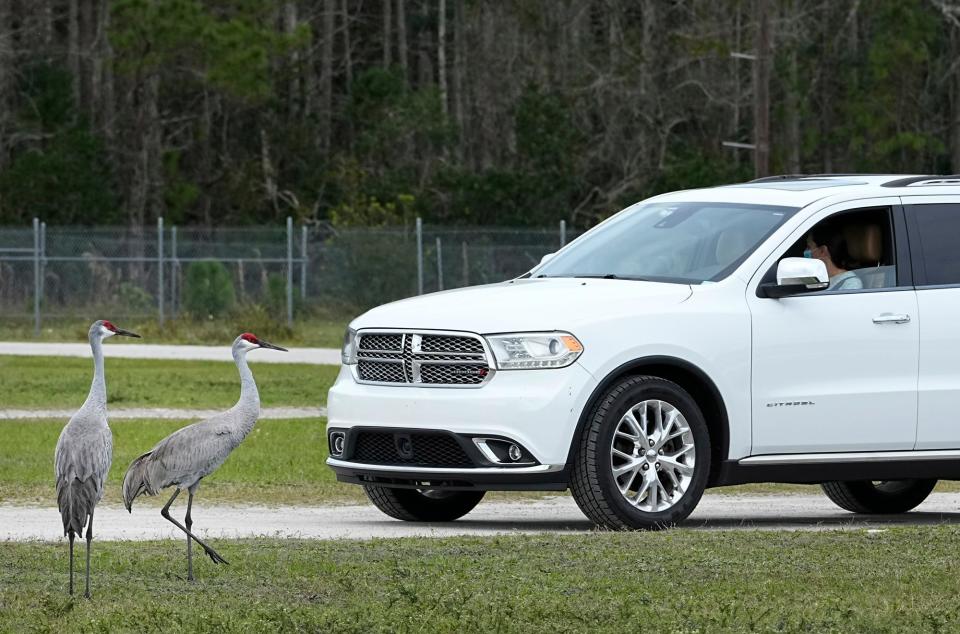
Sandhill cranes are noticeable not only for their height ― they can grow close to 4 feet tall ― but also for their distinctive call, which resembles something out of "Jurassic Park."
"It's definitely a clarion call from the past," Paul said.
They also like to boogie.
"Courting cranes stretch their wings, pump their heads, bow, and leap into the air in a graceful and energetic dance," according to the Cornell Lab of Ornithology.
Painted Bunting
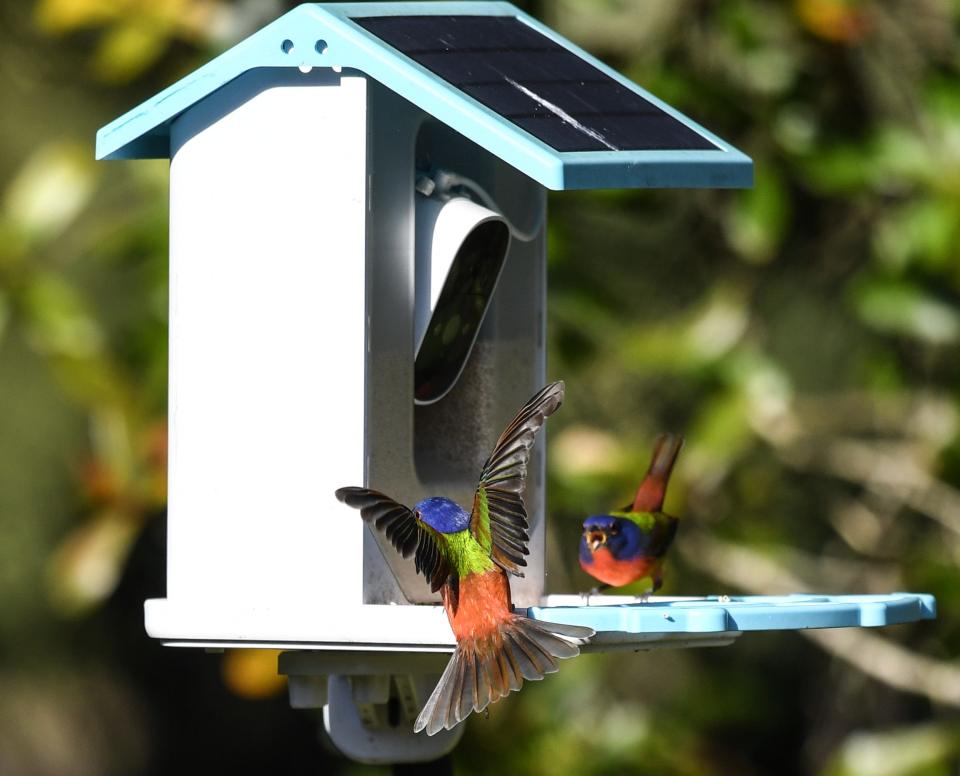
The Painted Bunting is a favorite among birders for its beautiful feathers.
Adult males have a blue head, red underparts and a lime green back, according to the Cornell Lab of Ornithology.
"Sometimes called the 'Nonpareil,' meaning 'unrivaled,' a fair way to describe the unbelievable colors of the male Painted Bunting," according to the National Audubon Society.
Florida Scrub-Jay
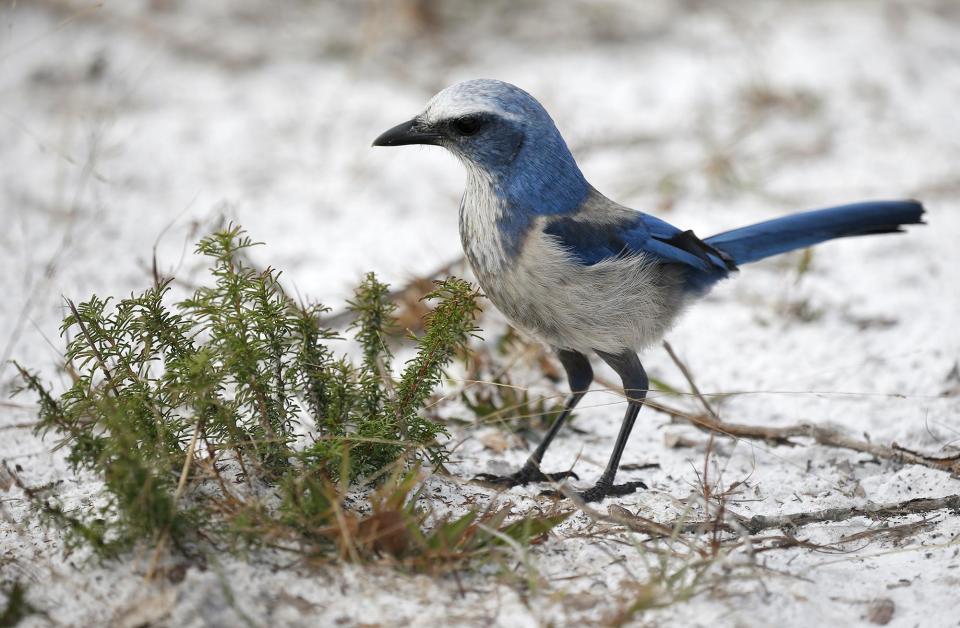
They are colored "dull blue overall with a whitish forehead and a pale gray back and belly," according to the Cornell Lab of Ornithology. And they live in "low-growing oak scrub and scrubby flatwoods with sandy soils in Florida."
Paul said she thinks of it as one of Florida's iconic birds.
"It is a bird that only exists in the state," she said.
About 75% of Florida scrub-jay family groups live in the "Ocala National Forest, Merritt Island National Wildlife Refuge, Cape Canaveral Space Force Station and Lake Wales Ridge," according to Audubon Florida.
Monk Parakeet
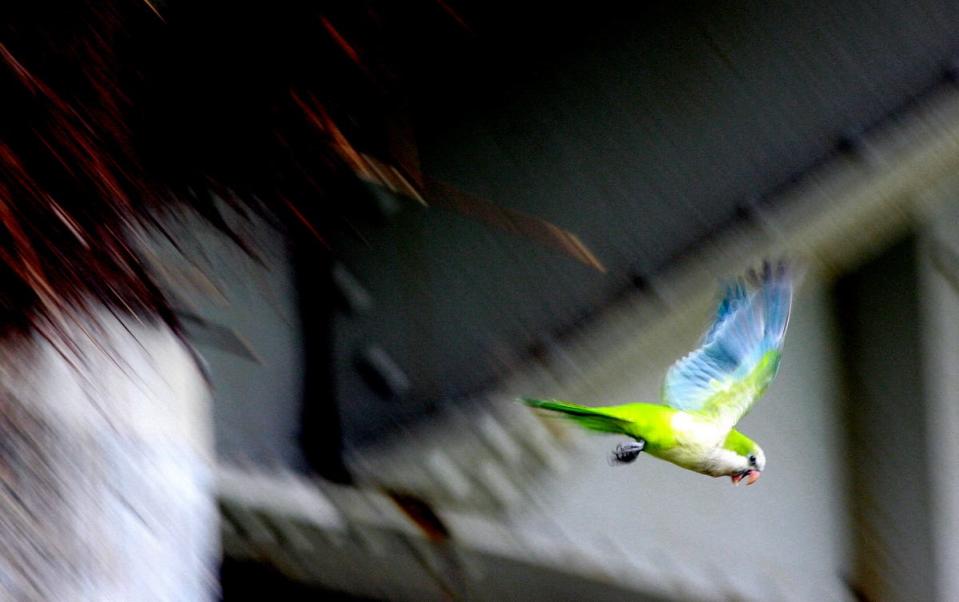
Monk Parakeets are green and gray with a splash of blue in their wings. They're originally from South America but have populations in Florida and beyond, according to the National Audubon Society.
"Many North American cities now have local colonies of Monk Parakeets, established by birds escaped from captivity," according to Audubon. "Despite some dire predictions in the past, these noisy but colorful birds have not yet spread to take over the countryside."
Their biggest Florida populations are "in Miami, West Palm Beach, and Tampa," according to the Florida Fish and Wildlife Conservation Commission.
Brown Pelicans
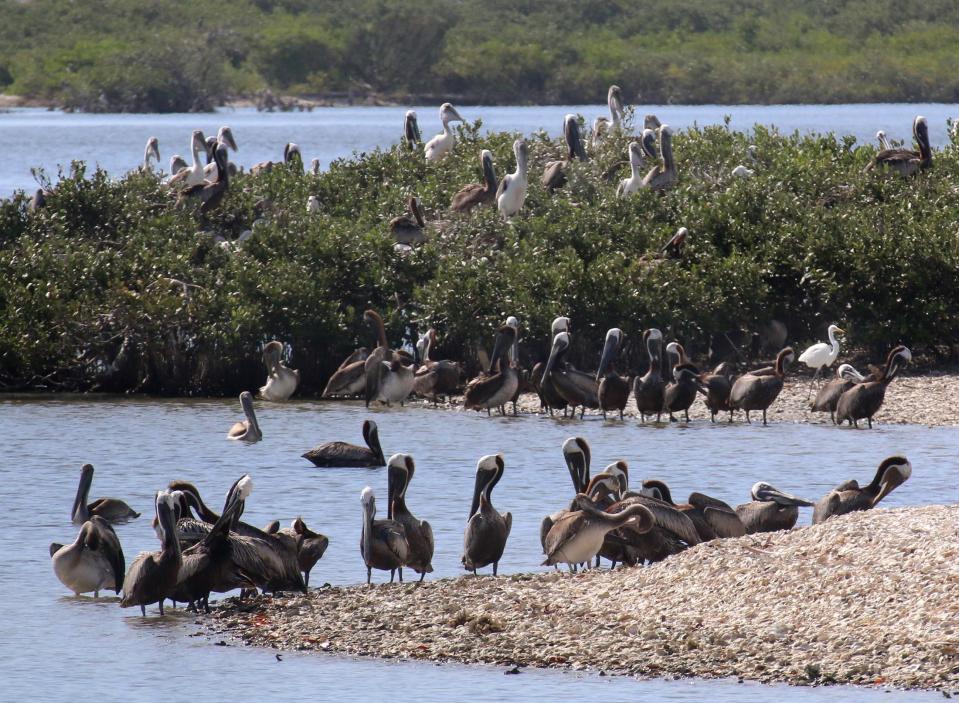
Brown Pelicans are fun to watch as they search for fish.
"They're just very distinctive and interesting to watch, the way they forage by plunging into the water," Paul said.
Limpkin
This "gangly brown-and-white" bird has a "haunting" cry, according to the Cornell Lab of Ornithology.
Paul, who used to work for Audubon Florida, said people would call her office to ask how to get Limpkins to stop making that sound. But it just comes with the territory.
"They call largely during the nesting season and during the summer when they are staking out territories along the edges of swamps. so if you live in a place where you back up to a wetland you might hear Limpkins calling. ... People have said it sounds like a woman being murdered in the swamp," Paul said.
Joan Tague, president of the Halifax River Audubon, described the Limpkin as a "relatively large bird" with "a really interesting lifestyle."
Birders might find piles of snail shells around wetlands where Limpkins have had a recent feast, according to Cornell.
Purple Gallinules
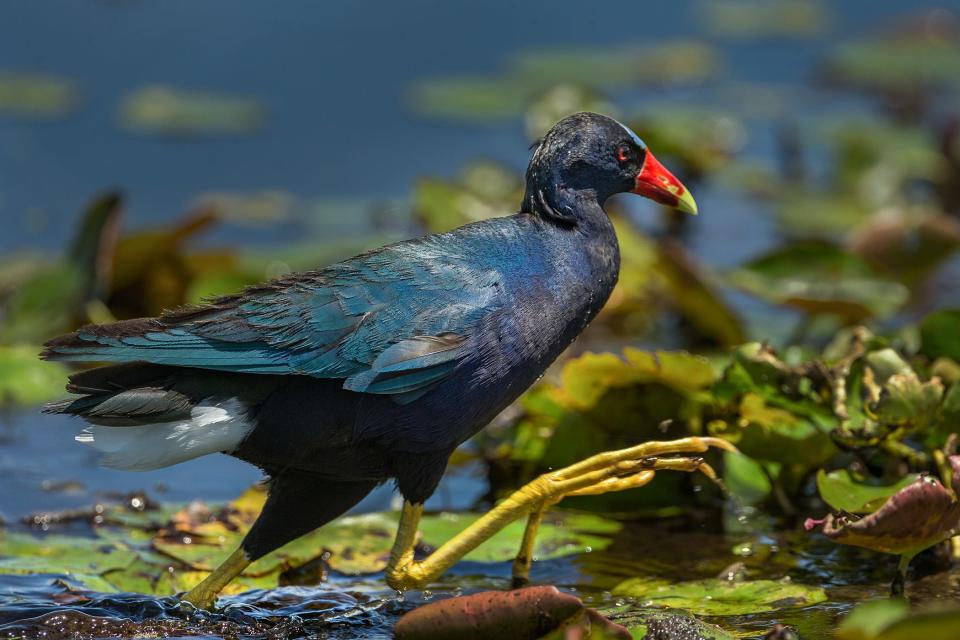
Another colorful member of the bird community, this species lives in a part of Florida year-round and tends to hang out in marshes.
The Cornell Lab of Ornithology describes them as "one of the most vividly colored birds in all of North America."
"Purple Gallinules combine cherry red, sky blue, moss green, aquamarine, indigo, violet, and school-bus yellow, a color palette that blends surprisingly well with tropical and subtropical wetlands" according to Cornell. "Watch for these long-legged, long-toed birds stepping gingerly across water lilies and other floating vegetation as they hunt frogs and invertebrates or pick at tubers."
Red-Winged Blackbird
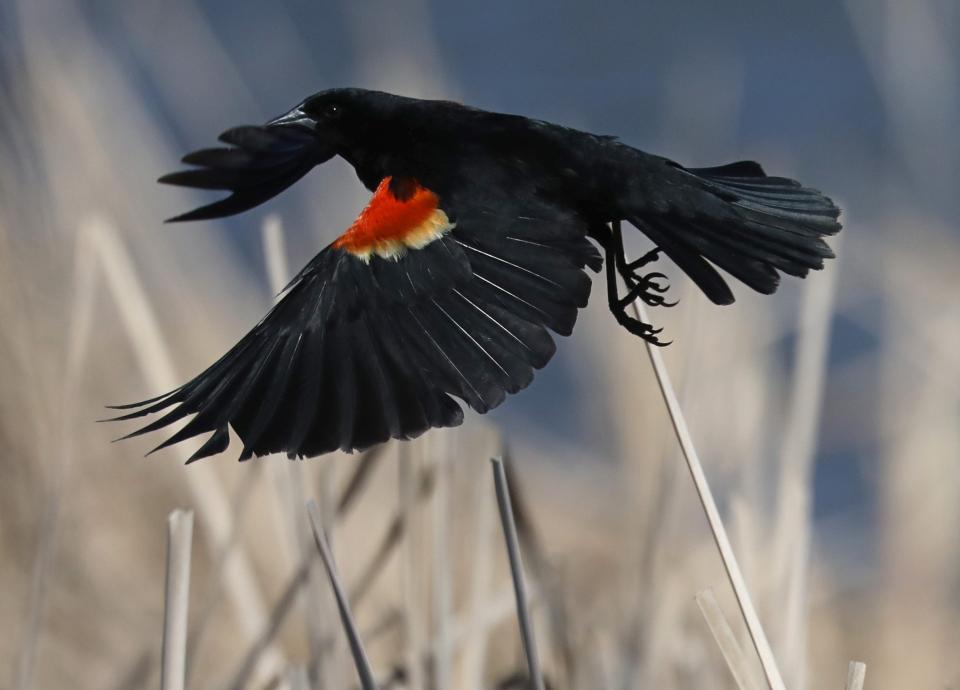
Red-Winged Blackbirds are common across the country, but they are striking. The males have all black feathers except for red and yellow patches on their shoulders.
Males make their red patches prominent while singing as part of attracting a mate and protecting their territory, according to the National Audubon Society.
Ruby-Throated Hummingbird
These fast-moving, tiny creatures grow up to about 3 1/2 inches tall and can beat "their wings more than 50 times a second," according to the National Wildlife Federation.
"Males have a brilliant iridescent red throat that looks dark when it’s not in good light," according to the Cornell Lab of Ornithology.
Their nests are usually about the size of a thimble, created from "grasses and plant fibers and held together with spider silk," according to the National Wildlife Federation.
This article originally appeared on The Daytona Beach News-Journal: Florida's most distinctive birds: Sandhill cranes, scrub jays and more

